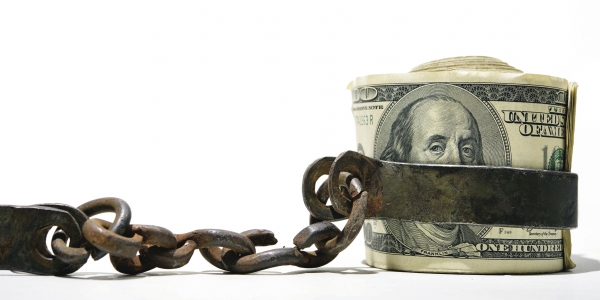by SVEN BECKERT
 IMAGE/Matt Roth/The Chronicle Review
IMAGE/Matt Roth/The Chronicle Review
Few topics have animated today’s chattering classes more than capitalism. In the wake of the global economic crisis, the discussion has spanned political boundaries, with conservative newspapers in Britain and Germany running stories on the “future of capitalism” (as if that were in doubt) and Korean Marxists analyzing its allegedly self-destructive tendencies. Pope Francis has made capitalism a central theme of his papacy, while the French economist Thomas Piketty attained rock-star status with a 700-page book full of tables and statistics and the succinct but decisively unsexy title Capital in the Twenty-First Century (Harvard University Press).
…
For the first half of the 19th century, slavery was at the core of the American economy. The South was an economically dynamic part of the nation (for its white citizens); its products not only established the United States’ position in the global economy but also created markets for agricultural and industrial goods grown and manufactured in New England and the mid-Atlantic states. More than half of the nation’s exports in the first six decades of the 19th century consisted of raw cotton, almost all of it grown by slaves. In an important book, River of Dark Dreams: Slavery and Empire in the Cotton Kingdom (Harvard University Press, 2013), Johnson observes that steam engines were more prevalent on the Mississippi River than in the New England countryside, a telling detail that testifies to the modernity of slavery. Johnson sees slavery not just as an integral part of American capitalism, but as its very essence. To slavery, a correspondent from Savannah noted in the publication Southern Cultivator, “does this country largely—very largely—owe its greatness in commerce, manufactures, and its general prosperity.”
…
The profits accumulated through slave labor had a lasting impact. Both the Browns and the Taylors eventually moved out of commodities and into banking. The Browns created an institution that partially survives to this day as Brown Brothers, Harriman & Co., while Moses Taylor took charge of the precursor of Citibank. Some of the 19th century’s most important financiers—including the Barings and Rothschilds—were deeply involved in the “Southern trade,” and the profits they accumulated were eventually reinvested in other sectors of the global economy. As a group of freedmen in Virginia observed in 1867, “our wives, our children, our husbands, have been sold over and over again to purchase the lands we now locate upon. … And then didn’t we clear the land, and raise the crops of corn, of tobacco, of rice, of sugar, of every thing. And then didn’t the large cities in the North grow up on the cotton and the sugars and the rice that we made?” Slavery, they understood, was inscribed into the very fabric of the American economy.
…
Craig Steven Wilder has shown in Ebony and Ivy: Race, Slavery, and the Troubled History of America’s Universities (Bloomsbury, 2013) how Brown and Harvard Universities, among others, drew donations from merchants involved in the slave trade, had cotton manufacturers on their boards, trained generations of Southern elites who returned home to a life of violent mastery, and played central roles in creating the ideological underpinnings of slavery.